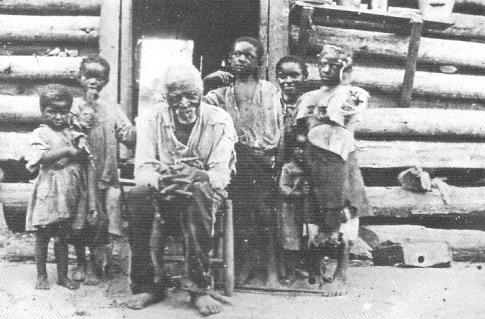
Seeing the New South
Race and Place in the Photographs
Of Ulrich Bonnell Phillips
Patricia Bellis Bixel
John David Smither
(University of South Carolina Press)

Seeing the New South might be the wrong title. Ulrich Bonnell Phillips (1877 - 1934) didn't exactly see what was going on around him in the southern United States. His several scholarly books on the subject showed him to be a firm believer in the plantation system, and not too uneasy about slavery. The radical historian Herbert Aptheker and the more mainstream Richard Hofstadter saw his view of labor and southern economics as "conservative" and "romanticized." Other historians said he portrayed slavery as "in the main, benevolent and a civilizing force which did much good for the blacks at little cost to them." Phillips came to be known as a man who celebrated plantation paternalism." According to Bixel and Smith, his focus was on the economics of slavery; he saw the antebellum south "as an organic society with slavery at its center ... populated by docile slaves and kindly, patriarchal masters."Philips insisted that slaves were inefficient laborers and slavery was generally unprofitable to masters, [suggesting] that planters could have garnered higher yields by capitalizing other commodities.
"It served a benevolent, 'civilizing' force for backward African Americans, even though it burdened southerners financially and politically." The historian Kenneth Stampp even supposes that Phillips was a romantic. What he was doing, said Stampp, was reflecting the views of the majority of southerners of the early 20th Century. Historian Daniel J Singal viewed him not as a "bigoted Old South Bourbon bent on resurrecting slavery," but a scholar who --- when compared to his peers --- might even be considered a reformer. Phillips saw the economic havoc slavery wrought: it locked white southerners into a "premodern mode of labor," and "discouraged diversification of the South's industries." He even opined that "had the Civil War not intervened, slavery would most likely have died a peaceful death," for
soil exhaustion and the paucity of land for the expansion of cotton cultivation would have killed it.
For him, the plantation was a schoolhouse, or, as he phrased it delicately: "a matrimonial bureau, something of a harem perhaps, perhaps, a copious nursery, and a divorce court." Because the laborers had to be "robust," he blandly surmised that the slave-holder would "safeguard the health of his operatives and their children."
§ § § Phillips died in 1934, and left behind almost six hundred photographs, prints, and slides, which did not come to light until recently. Ninety or so appear here, and a reader of this volume may wonder if there are others that better might have been included. There are dozens of shots of plantations, cabins, ruins, logging operations, rice fields, baling presses, and families of southern crackers. Phillips was also fascinated by the origins of African-Americans. He traveled with camera through Africa to document the "Equatorial Defence Force," the Dinkas, and, horrifically, convicts of the Azande who had had their hands chopped off.
The photos from the southern United States are fairly standard, and the reproduction is --- in many cases --- fairly bad. (We've augmented the ones on this page, except for the last, by adding contrast.) I think it would not have been dishonest to the memory of Philips to have used computer technology to touch up these pictures, no more than it was dishonest to use computer audio techniques to clean up the early Paramount discs of singers like Blind Lemon Jefferson, recorded so many years ago.